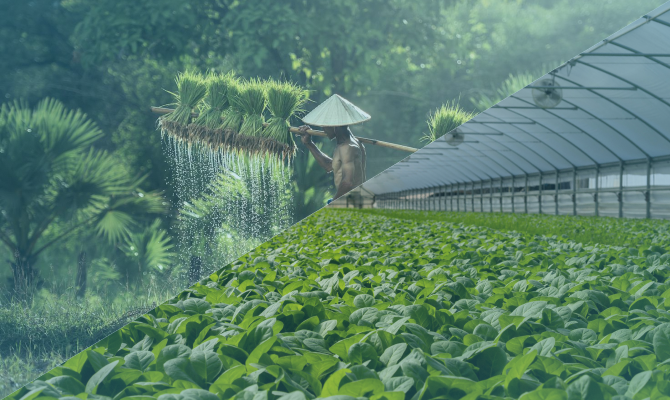Agriculture has experienced significant advancements over time. What once relied heavily on manual labor and guesswork has now evolved into a field driven by cutting-edge technology. This article explores how farming practices have changed, highlighting the key differences between traditional methods and modern innovations.
Manual efforts vs Automated solutions
Traditional method: Historically, pest control involved manual inspection and application of pesticides. Farmers would monitor crops for signs of pests and apply treatments manually, often with limited precision and effectiveness.
Modern approach: Today, technology has revolutionized pest control with automated solutions like drone spraying. Drones equipped with advanced sensors and sprayers can monitor crops and apply pesticides with high precision. This method reduces labor, minimizes environmental impact, and ensures even coverage.
Conventional techniques vs Aerial mapping
Traditional method: Land preparation used to be a labor-intensive process involving manual tools and equipment. Farmers would plow, till, and prepare the soil by hand, which was time-consuming and less precise.
Modern approach: Now, technologies such as aerial mapping with Aviro Mapping have streamlined land preparation. Using drones and satellite imagery, farmers can map their fields in detail, enabling more accurate and efficient soil preparation. This leads to better planning and resource management.
Basic watering vs. Smart water management
Traditional method: Traditional irrigation systems focused on simply watering the crops. These systems were often basic and did not account for variations in water needs or soil conditions.
Modern approach: Advancements in irrigation technology now include smart water management systems that monitor water quality and levels in real time. These systems adjust irrigation based on precise measurements, ensuring optimal water use and improving crop health.
Manual recording vs. Real-time monitoring
Traditional method: Data collection in traditional farming was done manually. Farmers would record observations and data by hand, which was prone to errors and delays.
Modern approach: With systems like Biota, data collection has become automated and real-time. These systems gather and analyze data on crop conditions, weather, and other factors continuously. This instant access to information helps farmers make informed decisions quickly.
Conclusion
The evolution from traditional to modern farming practices represents a remarkable advancement in agriculture. Previously, farmers relied on manual labor and basic tools, which often limited efficiency and effectiveness. Today’s technological innovations, such as automated pest control, aerial mapping, smart irrigation systems, and real-time data collection, have revolutionized farming. These advancements enable farmers to manage their crops with unprecedented precision and efficiency, leading to increased productivity and resource optimization.
Embracing these modern technologies not only enhances crop yields but also contributes to a more sustainable agricultural future. As farming continues to advance, staying informed about these developments can help farmers make better decisions and achieve greater success. Explore how these technologies can transform your farming practices by connecting with us on Instagram @avirtech_group.
Related blog posts

